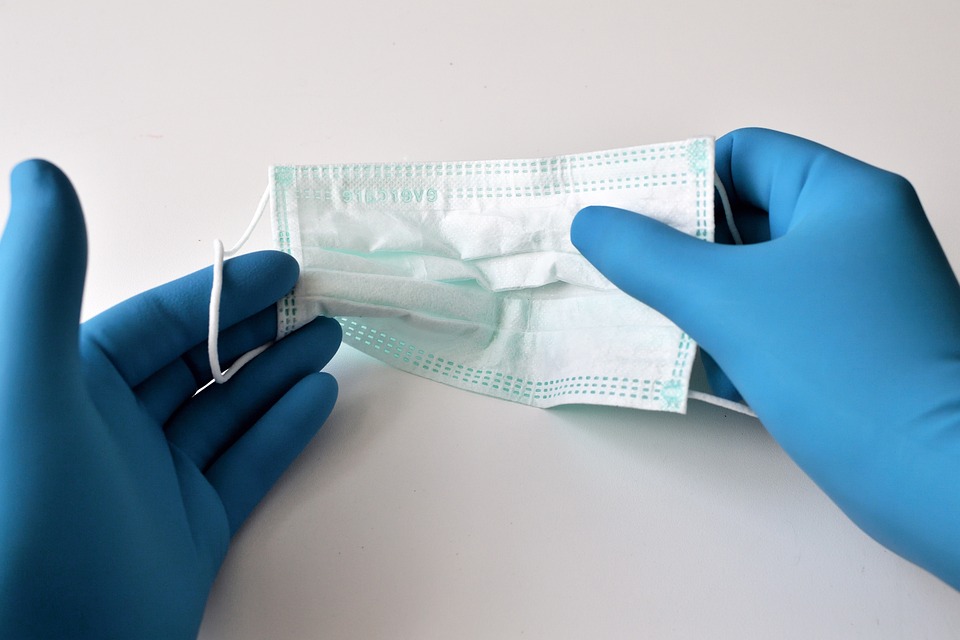
Nurses are fundamentally important in examining a patient’s requirement and the strategy of administering healthcare, which the Nursing and Midwifery Council’s (NMC) Future Nurse proficiency standards strongly stress. The paper puts “examining requirements and organizing care” in the 3rd spot among the seven skills in the “platforms” organization. It is important to Future Nurses that person-centered care and using evidence-based nursing interventions are prioritized in order to carry out an accurate assessment of the patient and establish an efficient care plan. The standards indicate the importance of gauging every patient’s competency to choose for themselves and to permit them the choice to agree or dissent.
A conversation between a client and their practitioner dictates the needs of the client in order to promote their health and well-being, and then discusses what is expected of them to occur in their daily life. Nursing assessment is done by gathering facts from the client and analyzing the data in order to determine the patient’s needs, sometimes defined as difficulties.
The creation of treatment intends to utilize diverse tactics to address the problems identified in the evaluation. The best thing to do is to pick evidence-supported nursing interventions. When creating medical plans, the patient’s needs and desires should be taken into consideration first and foremost, and the person should be engaged in the choice-making process in order to make sure a tailored experience is provided. The arranged medical attention must factor in the patient’s circumstances, individual qualities, and decisions. It is important to remember that the same rules that are used to create care plans in a hospital, residence, or nursing home can all be used in each setting.
Section 2 of the NMC Code emphasizes how important it is to collaborate and cooperate with patients to guarantee the provision of remarkable and reliable care and to include them in the care procedure, which entails granting them the power to make their own choices. It is essential to consider the individual in a big-picture context, taking into account their physical, mental, social, and spiritual well-being, which cannot be separated.
The internal components of a patient’s well-being will often dictate their level of compliance with the proposed advice and medical regimen. It is thus essential to recognize the underlying basis for non-coherence and to individualize treatments/suggestions for each person, consequently escalating the level of care given.
In 2007, Brooker formulated the term “VIPS” to tackle the uncertainty regarding what should be seen as patient-focused care. VIPS stresses the following:
- V is a value base that affirms the value of each human being, irrespective of age and cognitive ability. This is the foundation for individualized care
- I is individualized care that considers the individual’s distinctiveness and holistic needs
- P is about seeing the world from the patient’s perspective, to ensure that the health professional takes the patient’s point of view into account when providing care
- S is about maintaining a social environment that supports the patient’s psychological needs, including their mental, emotional, and spiritual needs.
Medical providers should make an effort to involve the individual in the choices they make and allow them to be as autonomous as possible by utilizing various techniques to accomplish this. A nurse must presume that a patient is able to make their own decisions, as stated in the Mental Capacity Act of 2005 unless demonstrated differently.
Care Planning
Organizing treatment is highly necessary for offering suitable nursing care. After assessing the requirements of a patient, it is essential to devise a “care plan” to take care of any current or potential issues that were discovered. This puts the client’s requirements at the forefront and assists in developing goals that are tailored for the individual. Care that has been arranged ahead of time will be re-evaluated when the patient’s needs vary and whenever the nurse or any other healthcare providers recognize newer requirements. Care planning helps professionals to share details about a patient’s treatment with other people, causing smoother transitions of care. Speech is the main form of communication, however, it is also necessary to utilize other types of documentation such as those generated by computers, written by hand, or ready-printed care plans.
It is important for nurses to contemplate their strategy when formulating a care plan in order to diminish the prospect of treating the patient like a child when conversing with them and deliberating their requirements. Collaborative consultation gets patients more involved with their own care, enhancing the connection between patient and healthcare provider, whereas a paternalistic approach takes away an individual’s say in their medical needs and could create disharmony between patient and healthcare worker, leading to underwhelming results. A team-based approach to consulting allows medical professionals to provide patient-centered care while also helping to involve the patient in their health care. This way of approaching the situation could entail inquiring, for example, ‘What treatment do you think would be most suitable for you?’ instead of having the medical professional declare what treatment is going to be administered with a phrase like ‘This is the treatment I’m prescribing you.’
Nursing Considerations
- The patient should know the reason for the assessment
- The assessment should be flexible and adaptable to the needs of the individual
- The patient must be fully involved and their dignity, independence, and interests should be paramount
- The patient can have someone with them if preferred
- Appropriate language and terminologies should be used throughout the consultation
- The diversity of the individual client, their beliefs, values, culture, and their circumstances must be considered
- It is essential to consider the patient’s gender, sexuality, ethnicity, disability, and religion as part of the assessment
- Be open to listening to the patient’s personal history and life story
- The entire family’s needs should be considered, inclusive of the patient and their carers: remember the importance of providing holistic care
- Cost-effectiveness should also be taken into account
Benefits of Care Planning
The Department of Health pointed to the goal of care planning being to raise the level of care along with the results it brings by honoring individual desires and allowing people to have control over their issues, as well as making sure they have control of the outcome. Healthcare workers should involve people in the decision-making process and empower them to take charge of their health, working together to set common objectives in order to achieve better results. This should be advantageous for both the patient and medical services, as it should cut down on the amount of GP visits and emergency room visits that the patient might need. Encouraging individuals to take control of their long-term illnesses can also help to prevent their conditions from becoming more severe.
Patients are enabled to look after themselves when they have to take charge of their well-being and when they have difficulty accessing medical services. It was clear during the coronavirus outbreak that many individuals had to wait a long time in between conversations with their medical staff. In recent years, care planning has seen a notable increase in the community care setting, particularly with regard to mental health, during the pandemic. This is largely due to its ability to improve agreement with treatment and other care needs from patients without the need for a lot of involvement from health care specialists. This has positive implications for both doctors and nurses working in the NHS, boosting job satisfaction, cutting costs, and ultimately improving how well patients are cared for.
Prioritizing the Implementation of Interventions
The same approach is taken when deciding which interventions should be carried out first as when deciding what nursing diagnoses should be given the highest priority. Maslow’s Hierarchy of Needs and the three basics of air passage, respiration, and blood circulation are used to determine the highest priority measures. Whenever it is feasible, the least intrusive approach is normally preferred due to the danger of harm that can be caused by intrusive solutions.
Considering the possible ramifications for future events, especially if a job is not finished on schedule, is part of determining which nursing interventions take precedence. If a patient has surgery that is coming up later, the nurse’s most important task is to get the NPO (nothing by mouth) prescription started before the patient’s education about the procedure can take place. The reasoning used for this choice is that if the patient were to consume anything to eat or drink, the operation would be put off. It is essential to be aware of and comprehend the patient’s reason for care, their current scenario, and the anticipated results to correctly prioritize interventions.
Patient Safety
It is vital to take patient safety into account when introducing interventions. In certain situations, if a patient’s condition has altered, it could be hazardous to proceed with the nurse’s strategy or doctor’s order. An example of an existing nursing care plan for a patient indicates that the nurse should walk the patient 100 feet three times daily. However, during the assessment this morning, the patient reported feeling dizzy and their blood pressure was 90/60. The nurse utilizes critical thought and sound clinical assessment to determine not to carry out the suggested intervention of aiding the patient to walk. The patient’s altered state should be noted and explained in the patient’s medical record, and discussed during the shift change/handoff report. Additionally, their healthcare provider should be informed of their condition change.
Ensuring patient safety should be the main focus when carrying out interventions, not just following provider prescriptions or checking items off the nursing care plan. Nurses, serving on the front lines, are able to intercept errors and keep them from affecting the patient.
In 2000, the Institute of Medicine put out a groundbreaking report named To Err Is Human: Creating a More Secure Health System. The report reported that up to 98,000 people succumb to avoidable medical mistakes in medical facilities in the United States annually. Making mistakes is something that all humans are susceptible to, and it had not been discussed in depth until ‘To Err Is Human’ made it a discussion to have. This has set in motion a plan to reduce medical errors and provide a better health system for patients by creating a more secure structure. In 2007, the Institute of Medicine came out with a subsequent report titled Preventing Medication Errors in which it was revealed that an estimated 1.5 million people are harmed in hospitals in the United States annually, with the average inpatient being subject to at least one medication mistake per day. This report focused on the steps healthcare systems could implement to increase medication safety.
An article by the Robert Wood Johnson Foundation reported that nursing errors can present a wide range of risks to patient safety. This area covers errors such as inappropriate location, patient, and procedure, mistakes with taking drugs, disregarding safety regulations that protect against infectious diseases passed through central lines, overlooking necessary precautions to stop patient falls, and anything else. Errors can be traced back to nurses working for extended stretches of time and becoming excessively tired, a lack of sufficient safety protocols, and interruptions that take place while the medical staff is providing treatment or dispensing medicine.
The QSEN project, initiated in 2005, was put into motion in an effort to help train future nurses to move ahead in making sure healthcare systems were increasingly safe and of high quality. The desire of the QSEN project is to encourage healthcare professionals to not just think about, but embrace quality and safety as fundamental parts of their job. Both nurses and nursing students are expected to get involved in quality improvement efforts by recognizing any potential shortfalls that need to be fixed and helping carry out solutions for them. Improving the quality of care is an ongoing effort among all involved: healthcare practitioners, patients and their families, researchers, funders, administrators, and teachers. This is done in order to attain better patient health, better system functioning, and better skills for professionals.
Delegation of Interventions
When incorporating interventions, registered nurses may decide to assign nursing work. The delegation, according to the American Nurses Association, involves assigning activities or tasks associated with patient care to unlicensed assistive personnel or licensed practical nurses (LPNs) while the registered nurse (RN) is held accountable for the results and outcomes. When delegating, RNs must evaluate the appropriateness of the task with regard to the patient’s condition and the situation, convey the information to the adequately trained LPN or UAP, ensure an adequate level of supervision, and document the completed task. The Registered Nurse must keep in mind the Nurse Practice Act of their state, as well as federal laws and the guidelines of the establishment, before transferring a task. The RN cannot delegate responsibilities requiring clinical judgment.
Best Practice In Writing Care Plans
Things to keep in mind when creating a specific and patient-oriented care plan are essential. Document in explicit detail the patient’s requirements and try to use the patient’s terms as much as possible, for example: “Mr. D” can never decide what to wear in the morning, as they always like to dress sharp. D has been having trouble selecting what clothes to wear each morning because they strive to look well-dressed. D is incapable of getting dressed on his own, and the goal is to get him to be able to do so. D will appear to dress smartly’.
The purpose of the care plan should be established by following the SMART criteria. It is essential that the purpose is precise by concentrating on matters that can be evaluated and having objectives that are attainable and practical. It is essential to come up with and document an expected duration in which a patient’s short-term and long-term objectives are able to be attained. In relation to Mr. D’s clothing, a daily time frame might be appropriate. To come to an agreement over this issue, Mr. D might be asked: ‘Mr. Do you want to have the freedom to decide what you want to wear each day and have help from staff to make your choices? Keeping a record of those decisions in the care plan would be an expected goal for the day.
A plan of action must indicate how an objective will be accomplished, with each duty allocated to the right individual. This could be the staff nurse on duty, the team nurse, the team leader, the nurse in charge, and/or (Insert patient name here). Assessment should be done on a consistent basis and properly recorded, following the timeline presented in the suggested program. An assessment should be done any time activities are carried out in line with the planned treatment, and records of the development of the patient’s difficulty/requirement should be kept.














